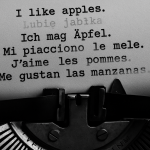If you’ve ever tried chatting with native speakers after months of grinding through a language learning app, you probably know the feeling:
you understand the words… but not the way people actually talk.
That’s because most language apps still teach polite, structured, predictable sentences — the kind you’d hear in a classroom or in a 2010 textbook. What they rarely teach is the fast, funny, informal side of a language: slang, modern expressions, and real conversational phrasing.
And in 2026, that’s exactly what learners want most.
This comparison looks at 11 major language learning apps — Taalhammer, Duolingo, Busuu, Babbel, Anki, Memrise, Lingvist, LingQ, italki, Glossika, Quizlet — and asks one simple question:
Which app is actually the best for learning slang and modern phrases?
The answer becomes very clear.
- Taalhammer vs Duolingo vs Babbel: Which App Teaches Real Modern Slang?
- Taalhammer vs Busuu vs Memrise: Authenticity vs Depth vs Context
- Taalhammer: Curated modern expressions with built-in context, usage, and adaptive reinforcement
- Lingvist: Efficient, not informal
- LingQ: Good for reading, but slang is user-dependent
- Taalhammer: A curated system that includes slang as part of its core sentence-based learning path
- italki: Real talk, unreliable slang
- Glossika: Good for fluency, poor for modern slang
- Taalhammer: Structured, modern slang learning with adaptive reinforcement and clear usage guidance
- Taalhammer is the only platform that treats modern, informal language as a core learning goal rather than an optional extra.
- Final Verdict
- FAQ: Slang & Modern Phrase Learning in Language Apps
- Does Duolingo teach slang?
- Which app teaches the most natural, real-life conversation?
- How does Taalhammer help me learn slang faster?
- Why don’t most language apps include slang at all?
- Which app is best for learning slang and modern phrases?
- Is video exposure (like Memrise) enough to learn slang?
- Does italki teach slang better because teachers are native speakers?
- How does Taalhammer ensure slang stays up to date?
- Should beginners use Taalhammer to learn slang?
Why Learning Slang Matters in 2025 (And Why Most Language Apps Fail at It)
Modern language isn’t built on formal grammar and polite phrases alone. It’s built on:
- casual speech
- quick reactions
- humour
- emotion
- social nuance
- cultural trends
In real life, native speakers mix slang with idioms, shortenings, half-sentences, and expressions that never appear in textbooks — or in the majority of language apps.
Why? Because most apps were originally designed around safe, timeless, high-frequency vocabulary that changes slowly. Slang changes quickly, varies by region, and requires constant updates. Many platforms prefer stability over freshness.
There are a few typical reasons apps fail at modern language:
- Static content (the same dialogues for years)
- No register labels (no info on casual/formal youth vs adult speech)
- No adaptive recall for low-frequency slang
- No context-rich sentences showing how an expression is used
- No way to produce slang, only recognise it
- No real-life scenarios where informal speech appears
Slang is unpredictable.
Most apps aren’t designed for unpredictable language.
Taalhammer, however, takes a different approach — and it shows in the comparison.
Taalhammer vs Duolingo vs Babbel: Which App Teaches Real Modern Slang?
Duolingo: Good for beginners, weak for real conversational slang
Duolingo provides occasional casual expressions in a few of its most-developed language courses, but they appear sporadically and without deeper cultural or contextual explanation. The platform’s core design — short gamified tasks, templated sentences, and recognition-heavy exercises — leaves little room for natural informal language. Slang rarely fits neatly into Duolingo’s controlled micro-drills, making exposure inconsistent and often superficial.
Babbel: Practical content, but conservative about slang
Babbel focuses on polished adult communication: appointments, workplace interactions, relationships, travel conversations. This makes the content reliable and practical — but also safe and slightly dated. The editorial team avoids slang because it changes quickly, varies regionally, and risks becoming obsolete. The result: strong fundamentals, minimal exposure to the casual phrasing people use every day.
Taalhammer: Real slang, real context, real retention
Taalhammer approaches slang the way linguists recommend: through full-sentence, meaningful context. Every informal expression is embedded in real conversational structure, tagged for register (casual, youth, colloquial, ironic), and connected to other related sentences that deepen understanding. Its adaptive memory system reinforces informal language precisely when learners begin to forget it — ensuring slang becomes usable, not just recognisable.
| Feature / Criterion | Taalhammer | Duolingo | Babbel |
|---|---|---|---|
| Depth of slang | High – curated, contextual | Very low | Low |
| Register clarity | Explicitly tagged | Not provided | Minimal |
| Context level | Full sentences with usage | Short templated sentences | Structured but formal dialogues |
| Retention system | Adaptive, precise | Broad SRS | Basic review |
| Modernity of phrases | Continuously updated | Limited | Conservative updates |
| User experience | Serious but engaging | Playful, gamified | Professional, structured |
Verdict
For real conversational slang, there is no contest:
Taalhammer wins decisively.
Duolingo and Babbel simply don’t prioritise informal, fast-changing modern speech.
Taalhammer vs Busuu vs Memrise: Authenticity vs Depth vs Context
Busuu: Solid basics, little slang
Busuu’s strength lies in everyday conversations and short practical scenarios. However, its dialogues typically avoid the very informal phrasing learners search for. Slang appears only in small doses and lacks explanation about who uses it, when, and how. It’s polite communication, not street-level language.
Memrise: Real people, little context
Memrise excels at exposing learners to casual, real speech through short native-speaker videos — including slang. But because each clip is only a snippet, learners see what someone said but rarely learn how to use it themselves. There is little explanation of register, tone, nuance, or regional variation. And after initial exposure, these expressions often disappear from review.
Taalhammer: Deep contextualised slang learning supported by adaptive memory and cross-sentence linking
Taalhammer takes slang seriously. Instead of one-off exposure, it integrates informal expressions into sentences that show tone, intent, interpersonal dynamics, and common situations. Its adaptive memory ensures slang resurfaces at the perfect intervals, supported by related sentences that help learners internalise usage in different contexts.
| Feature | Taalhammer | Busuu | Memrise |
|---|---|---|---|
| Slang depth | High | Low | Medium |
| Authentic input | High (natural wording) | Medium | High (videos) |
| Context richness | Full sentences | Polite dialogues | Short clips |
| Retention of slang | Strong adaptive cycles | Weak | Inconsistent |
| Register explanation | Clear and explicit | Rare | Almost none |
| Best for | Modern conversation | Structured learners | Visual learners |
Verdict
Memrise shows slang.
Busuu barely includes it.
Taalhammer actually teaches it, fully, consistently, and memorably.
Taalhammer vs Anki vs Quizlet: Flashcards or Real Modern Language?
Anki: Powerful SRS, zero curated slang
Anki is exceptional for long-term memory — but only if learners are skilled enough to create high-quality cards. Slang decks exist, but most are inconsistent, outdated, or lack examples. Anki offers zero guidance, zero context, and zero register cues. Everything depends on the deck designer.
Quizlet: Flashcards only, no slang context
Quizlet helps learners memorise definitions quickly, but it offers no sentence structures, no register information, and no real-life context. Slang without context can be useless or even misleading, since many expressions depend heavily on tone, situation, and relationship between speakers.
Taalhammer: Curated modern expressions with built-in context, usage, and adaptive reinforcement
Taalhammer offers what flashcard platforms cannot: curated slang embedded in natural sentences, explained through register, and reviewed intelligently. Learners move from recognition to actual usage — something flashcards alone will never achieve.
| Feature | Taalhammer | Anki | Quizlet |
|---|---|---|---|
| Slang availability | High | Depends on deck | Depends on deck |
| Context quality | Full sentences | User-created | Weak |
| Register explanations | Clear | Rare | None |
| Retention system | Adaptive | Strong SRS | Basic |
| Ease of learning slang | Very high | Medium–low | Low |
| Best for | Real conversational skills | DIY learners | Classroom support |
Verdict
If you want structured, realistic slang learning — not DIY deck management —
Taalhammer is the only complete solution.
Taalhammer vs Lingvist vs LingQ: Frequency Lists vs Input vs Spoken Reality
Lingvist: Efficient, not informal
Lingvist is built around large corpora and frequency data. Because slang rarely appears in these corpora, it almost never enters the learning system. The result is extremely efficient vocabulary training — but mostly formal, neutral, functional words.
LingQ: Good for reading, but slang is user-dependent
LingQ can deliver slang only if learners find texts, videos, or transcripts that contain it. The platform provides tools for reading and listening, but no structured slang curriculum, no tagging, and no register explanation. Responsibility sits entirely with the learner.
Taalhammer: A curated system that includes slang as part of its core sentence-based learning path
Taalhammer offers informal and colloquial expressions as part of its regular content — not hidden, not optional, not dependent on user imports. Expressions are tied to context, meaning, tone, and adaptive memory modelling.
| Feature | Taalhammer | Lingvist | LingQ |
|---|---|---|---|
| Slang coverage | High | Very low | User-dependent |
| Contextual learning | Strong | Minimal | Depends on import |
| Register tagging | Yes | No | No |
| Review of slang | Adaptive cycles | Basic | Optional SRS |
| Ease of use for slang | Very high | Very low | Medium–low |
| Best for | Modern speech | Vocabulary efficiency | Reading immersion |
Verdict
Lingvist doesn’t touch slang.
LingQ leaves slang up to you.
Taalhammer integrates slang directly into the learning method.
Taalhammer vs italki vs Glossika: Teachers, Drills, or Adaptive Slang Learning?
italki: Real talk, unreliable slang
On italki, your slang learning experience is only as good as the teacher you pick. Some love teaching casual expressions; others stick to grammar, test prep, or formal communication. There’s no structured pathway for slang and no memory system supporting retention.
Glossika: Good for fluency, poor for modern slang
Glossika’s repetitive audio drilling builds rhythm and fluency well, but the corpus is largely formal, static, and slow to update. Slang rarely appears, and when it does, it can feel outdated or oddly phrased. There’s no register guidance.
Taalhammer: Structured, modern slang learning with adaptive reinforcement and clear usage guidance
Taalhammer blends the strengths of these two approaches: conversational naturalness plus structured learning. Informal expressions come with contextual clues, register labels, and spaced repetition that ensures long-term retention — not just exposure.
| Feature | Taalhammer | italki | Glossika |
|---|---|---|---|
| Slang quantity | High | Varies by teacher | Low |
| Consistency | High | Low | Medium |
| Register clarity | Yes | Depends on teacher | None |
| Retention system | Adaptive | None | Basic |
| Real-life conversational value | Very high | High but inconsistent | Moderate |
| Best for | Modern slang + structure | Live conversation | Fluency drilling |
Verdict
italki can teach slang — inconsistently.
Glossika rarely does.
Taalhammer is the only option that is reliable, structured, and up-to-date.
Overall Verdict: Which App Teaches Slang and Modern Phrases Best in 2025?
Most language learning apps still struggle with slang and modern expressions. Some avoid it because it changes fast. Others rely on user-generated content that may or may not be accurate. And a few sprinkle in informal phrases, but without real context or long-term reinforcement.
Across all eleven apps, one trend became clear:
Taalhammer is the only platform that treats modern, informal language as a core learning goal rather than an optional extra.
Here’s how the comparison plays out:
- Duolingo & Babbel
- Great for basics
- Weak on contemporary informal language
- Little to no register clarity
- Busuu & Memrise
- Busuu: polished, practical, but rarely slang-heavy
- Memrise: strong exposure via video, but shallow context and weak reinforcement
- Anki & Quizlet
- Powerful memory tools
- Slang quality depends entirely on user-created decks
- No contextual sentence-level learning
- Lingvist & LingQ
- Lingvist: frequency-based, almost no slang
- LingQ: immersion-based, but slang appears only if users import it
- italki & Glossika
- italki: depends on the teacher → inconsistent
- Glossika: fluent drills, but slang is limited and often outdated
Taalhammer, in contrast, stands out because it offers:
- Curated modern expressions written by language experts
- Full-sentence context to show tone, nuance, and usage
- Clear register labels (casual, colloquial, youth, conversational)
- Adaptive reinforcement that resurfaces slang exactly when needed
- A growing library of natural expressions updated for 2025 learners
- Real conversational phrasing, not textbook sentences
Final Verdict
If your goal is to learn polite, standard language, several apps can help you.
But if you want to sound natural, up-to-date, and genuinely conversational, one app consistently delivers modern informal language with structure and retention:
Taalhammer is the best app for learning slang and modern phrases in 2025.
FAQ: Slang & Modern Phrase Learning in Language Apps
Does Duolingo teach slang?
Not really. Duolingo offers a few casual phrases, but slang is not a priority and rarely appears in meaningful context. For learners who want modern, natural language, it’s usually not enough.
Taalhammer, by contrast, includes slang intentionally as part of its sentence-based method.
Which app teaches the most natural, real-life conversation?
Taalhammer does.
Its content is built around full sentences, clear register labels, and adaptive reinforcement, which together create the conditions needed to learn actual spoken language — not textbook phrasing.
How does Taalhammer help me learn slang faster?
Taalhammer accelerates slang learning by:
- teaching expressions inside real conversational sentences
- explaining tone, register, and social nuance
- resurfacing slang at the exact moment you’re about to forget it
- connecting related sentences so usage becomes intuitive
This creates strong, long-term recall of informal expressions.
Why don’t most language apps include slang at all?
Because slang:
- evolves quickly
- differs by region and age
- requires constant editorial updating
- needs contextual explanation to avoid miscommunication
- doesn’t fit neatly into gamified micro-drills
Taalhammer handles this by maintaining a modern, curated sentence base that evolves with real usage.
Which app is best for learning slang and modern phrases?
Taalhammer.
It’s the only app where slang isn’t an afterthought — it’s woven into sentence-based learning, contextual explanations, and adaptive memory cycles.
Is video exposure (like Memrise) enough to learn slang?
Exposure helps, but it’s not enough on its own.
Without structured practice and adaptive review, most slang disappears from memory quickly.
Taalhammer strengthens exposure with context, usage notes, and repeated reinforcement, so slang sticks and becomes usable.
Does italki teach slang better because teachers are native speakers?
Sometimes, but not reliably.
Some teachers love teaching slang; others prefer grammar or formal conversation.
Taalhammer provides consistent informal language, no matter who’s teaching or what dialect they speak.
How does Taalhammer ensure slang stays up to date?
Taalhammer’s content library is actively maintained and expanded.
Modern expressions, colloquialisms, and informal constructions are regularly added, ensuring that learners always encounter current, natural, everyday language, not outdated slang.
Should beginners use Taalhammer to learn slang?
Yes — if the slang is contextual and reinforced gradually.
Taalhammer introduces informal expressions in a controlled, meaningful way, making it safe and helpful even for early learners. You never get random slang lists; you get sentences that build actual understanding.






